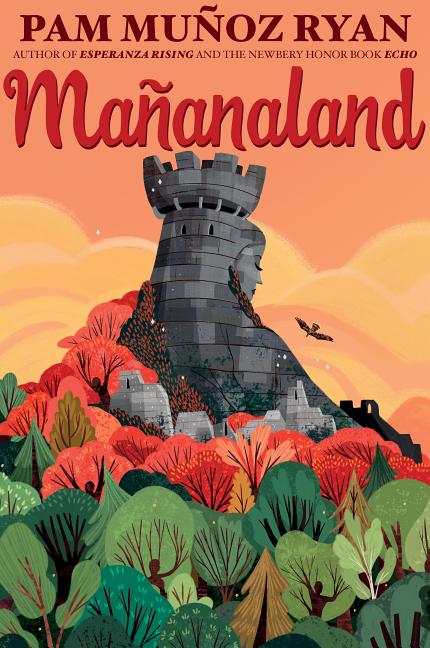Meet-the-Author Recording with Pam Muñoz Ryan
Mañanaland |
Pam Muñoz Ryan introduces and shares some of the backstory for creating Mañanaland.
Translate this transcript in the header View this transcript Dark mode on/off
Pam Ryan: Hello, I'm Pam Muñoz Ryan, the author of Mañanaland. What inspired Mañanaland? My editor, Tracy Mack, and I had been talking about what my next book might be after Echo. And we had thought that I might do a picture book. And so when I was in New York next, as luck would have it, we were able to meet with Peter Sís, who illustrated my book, The Dreamer. And he happened to have a portfolio with him with a lot of sketches of stone arch bridges in Prague, where he is from. And the bridges were ancient and intriguing and mysterious. I love the metaphorical quality of the bridges too, the connecting of one side of the river to the other. And after that get together, Tracy and I discussed ideas about a picture book, possibly with Peter. But as so often happens in publishing, he was busy with other projects and my story grew and grew until it was no longer something that would fit into 32 pages.
Initially, I imagined a boy walking near a bridge, on the bank of a river with his father. And at first I saw this boy with a wild imagination who asked his father questions like, "How can I catch the moon?" and "How can I reach the horizon?" But it evolved into the boy asking his father if he could hold tomorrow in the palm of his hand. I didn't know why the boy wanted to hold tomorrow. I didn't know the adventure that might come about. I did know, from that very first visualization, that there would be some sort of conflict or frustration between the boy and his father and then, hopefully, resolution and a reunion.
My character Maximiliano Córdoba lives somewhere in the Americas, long after once upon a time and long before happily ever after. He's 12 years old and he loves fútbol, soccer. He comes from a long line of stonemasons who build bridges, and it is a humble yet noble legacy. And even though he grows up not knowing his mother, because her identity is shrouded in secrecy, he has the loving support of protective relatives. But then his life begins to unravel. So I began to wonder about the circumstances that would allow Max to hold tomorrow and who could facilitate such a thing. I created a legend that had been handed down from generations of bridge builders about a hidden bridge and the mysterious gatekeeper, who will allow a person who is true of heart to go on a journey with her to hold tomorrow.
I purposely set the story in an obscure place that could be any number of countries, villages, or even in our very own backyards. And, with equal intention, I did not set the story in a particular year, because it happened centuries ago. It is happening now all over the world. And it's likely to continue in the tomorrows to come. So at its core, I wanted Mañanaland to be about adults modeling kindness and courage and nurturing in their children a legacy of compassion. And I hope that the reader would come to realize that Mañanaland is not only a place, but a state of mind.
And now I'd like to share some of Mañanaland by beginning with Chapter One. Somewhere in the Américas, many years after once-upon-a-time and long before happily-ever-after, a boy climbed the cobbled steps of an arched bridge in the tiny village of Santa Maria, in the country of the same name.
He bounced a fútbol on each stone ledge.
In the land of a hundred bridges, this was his favorite. When he was a baby, Papá, a master stonemason and bridge builder, had carved his name on the spandrel wall for all to see.
Maximiliano Córdoba.
On his bridge, Max liked the going up of it.
He liked that when he reached the threshold, the deck reached Río Bobinado in a long bumpy alley. He dropped the ball and dribbled it toward the middle of the deck, bouncing it off the sides of his dusty huarache sandals.
Here above the keystone, he could see all of his world before him and the river below, curving away from Santa Maria, looping back and curving away again. He moved his hand to mimic the river's erratic path as it circled the islets and giant boulders. Why was Río Bobinado so indecisive?
This Meet-the-Author Recording with Pam Muñoz Ryan was exclusively created in July 2020 by TeachingBooks with thanks to Scholastic.



